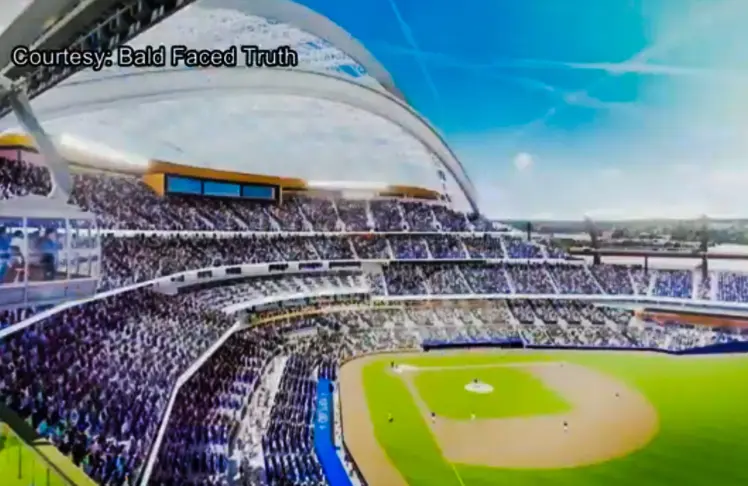
The Portland Diamond Project, the organization spearheading the city’s endeavors to attract a Major League Baseball team, recently set its sights on the RedTail Golf Center in Beaverton as a potential location for a stadium, as announced on January 30. However, this decision has stirred up more questions than answers as the proposal unfolds.
The prospect of hosting tens of thousands of fans in Beaverton 81 times a year has sparked concerns about the logistical challenges of efficiently transporting people to and from the stadium. Currently, the area has limited public transportation options, raising uncertainties about how attendees from across the metro area would access the venue without exacerbating traffic congestion.
In contrast, records indicate that Portland City Hall continues to favor a stadium location at the Lloyd Center, arguing that the area already boasts the necessary infrastructure to support a new ballpark. Mayor Ted Wheeler has been a vocal proponent of developing a stadium at this site, emphasizing the potential positive impact on the city’s urban core.
The contrasting preferences for stadium locations underscore the complexities involved in planning and executing a major sports venue project. As discussions and deliberations begin to come along, stakeholders will need to address critical issues such as transportation accessibility, infrastructure readiness, and community impact to ensure the successful integration of a Major League Baseball team into the vibrant fabric of Portland’s sporting landscape.
To ensure the successful integration of a Major League Baseball team into Portland’s sporting landscape, stakeholders will need to address several critical issues:
1. **Stadium Location**: Deciding on the optimal location for the stadium is crucial. Factors such as accessibility, infrastructure readiness, and community impact must be carefully considered to create a venue that enhances the fan experience and integrates well with the surrounding area.
2. **Transportation**: Developing efficient transportation options to and from the stadium is essential to accommodate the influx of fans on game days. Investing in public transit, parking facilities, and traffic management strategies will be key to alleviating congestion and ensuring a seamless experience for attendees.
3. **Community Engagement**: Engaging with local communities and residents is vital to address concerns, gather feedback, and build support for the MLB team’s presence in Portland. Creating positive relationships with neighborhoods surrounding the stadium can help mitigate potential conflicts and promote a sense of inclusivity.
4. **Economic Impact**: Assessing the economic impact of hosting a Major League Baseball team is crucial. Stakeholders must evaluate factors such as job creation, tourism revenue, and the overall financial benefits to the city to ensure that the venture is sustainable and beneficial to the local economy.
5. **Fan Experience**: Enhancing the fan experience is paramount to the team’s success. Providing amenities, entertainment options, and a welcoming atmosphere at the stadium can cultivate loyalty among fans and contribute to the overall excitement and appeal of attending games.
6. **Regulatory and Legal Considerations**: Navigating regulatory frameworks, zoning laws, and legal requirements is essential to secure approvals and permits for the stadium construction. Compliance with environmental regulations, safety standards, and other legal considerations is crucial for a successful integration process.
By addressing these critical issues thoughtfully and collaboratively, stakeholders can pave the way for a smooth and successful integration of a Major League Baseball team into Portland’s vibrant sporting landscape, enriching the city’s cultural fabric and creating new opportunities for sports enthusiasts and the community at large















